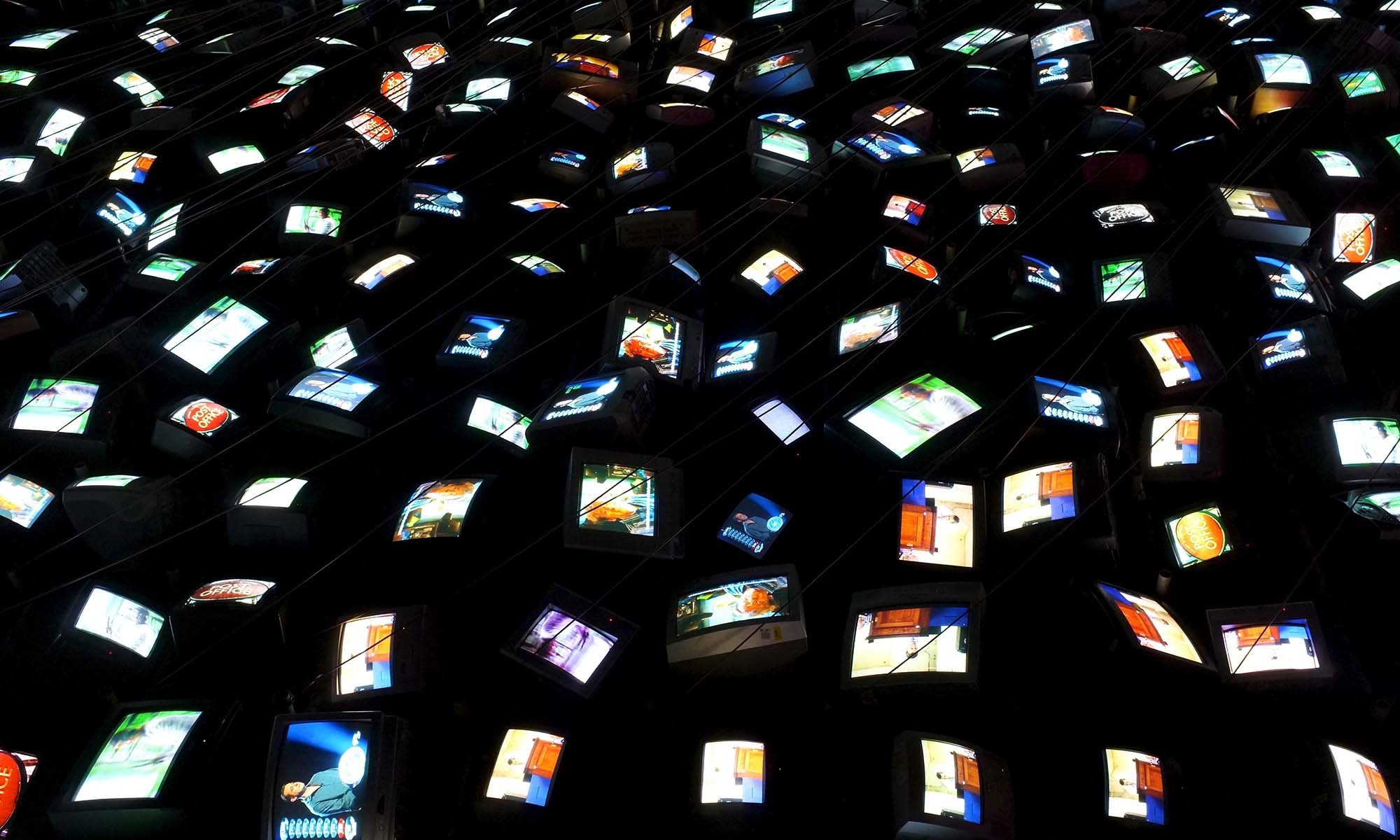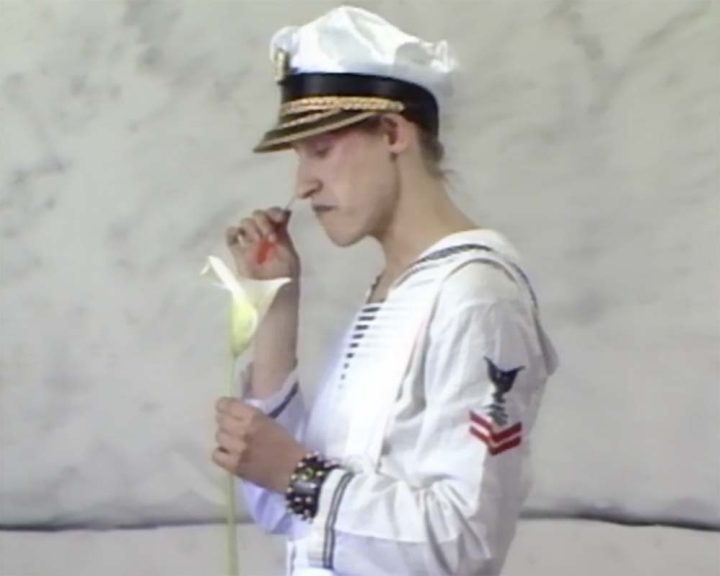RE_EXHIBIT 4
SHE-WOLVES_ EROTISM>LOVE>BODY
Curated by Laura Leuzzi
Featuring:
Antonie Frank Grahamsdaughter, Bettina Gruber, Živa Kraus, Lydia Schouten and Maria Vedder.
30 May – 31 July 2024 Extended to 31 August 2024
A healthy woman is much like a wolf: robust, chock-full, strong life force, life-giving, territorially aware, inventive, loyal, roving. (Pinkola Estès 1992:10).
The exploration into a liberated female body and sexuality is key to the work and research of several women video and film pioneers in the 1960s, 1970s and 1980s. Inspired by the famous book by Clarissa Pinkola Estès, Women who run with the wolves (1992) and the figure of the she-wolf, the exhibition entitled SHE-WOLVES_EROTISM>LOVE>BODY explores erotism, love and the body. The selection includes early video artworks by Antonie Frank Grahamsdaughter, Bettina Gruber, Živa Kraus, Lydia Schouten and Maria Vedder.
The exhibition of historic work is complemented by a contemporary video by Elisabetta di Sopra, which evokes a female shamanic figure who explores and guides us into Nature.
Acknowledgements: This exhibition develops from materials and interviews collected during previous AHRC projects including EWVA European Women’s Video Art (2015-18) and REWINDItalia (2011-14); and is inspired by Leuzzi’s work with Diana Georgiou and Giulia Casalini, as well as a recent chapter for the upcoming book Wives, Witches, and Whores, edited by Helen Gorrill, published by Bloomsbury.
Laura Leuzzi is an art historian and curator. She is the author of articles and essays in books and exhibition catalogues, with her research focused on early video art, European video art histories, art and feminism, and new media. She has presented internationally and given lectures at several universities. She is co-editor of REWINDItalia. Early Video Art in Italy (2015) and EWVA European Women’s Video Art in the 70s and 80s (2019) and Richard Demarco: The Italian Connection. In 2019 she co-founded the Digital Art and Activism network with Prof. Joseph DeLappe with whom she recently co-edited Incite. Digital Art and Activism (Peacock 2023). She is on the Editorial Board of the Swiss-French research project The Emergence of Video Art in Europe (1960-80; ECAL, Lausanne/Paris). She sits on the Executive Board of Media Art Histories and on the Advisory Board of Live Art Ireland. She is founding co-director of RE_EXHIBIT_REWIND Online Gallery (RGU/University of Dundee).
Currently, she is Chancellor’s Fellow at Gray’s School of Art, RGU, Aberdeen.
In the 1960s, 1970s and 1980s feminists in video, film and performance as well as in other practices were acutely aware of the patriarchal objectification of nude women figures in the traditional visual arts and in the twentieth century in media and arts, and likewise the risks involved in using their naked bodies (Elwes 2005, Leuzzi 2019).
Inspired by the famous book by Clarissa Pinkola Estès, Women who run with the wolves, this small, curated selection engages with the notion of a woman that unleashes the power of an ancient female archetype: “A healthy woman is much like a wolf: robust, chock-full, strong life force, life-giving, territorially aware, inventive, loyal, roving.”
This creature – as portrayed by Pinkola Estès – is fired up by a heat that is not limited to sexual arousal but is expanded to an “intense sensory awareness” which includes her sexuality. All her senses – taste, touch, sound, sight and much more – are activated by stimuli.
For Pinkola Estès “stories are the medicine” (14), and a key tool to elicit the awakening of the inner woman. Another powerful tool to unleash this power is laughter, which, though considered not very “ladylike”, is contained in old and lost stories of the Dirty Goddesses (335-36).
Inspired by this powerful notion, the small selection presented here explores liberated love, erotism and the body as conduits to experience the world through the senses in early women’s video in Europe.
The discovery, exploration and connection of the female body to Nature is at the core of the video installation Transit (1986; Scacco 2019: 201-2) made by Canadian- Swedish artist Antonie Frank Grahamsdaughter while a student at the Jan Van Eyck Academie in Maastrict – renowned for its famous programme led by video pioneer Elsa Stanfield.
The installation – that was expanded into a live performance during the opening – included a single-channel video on display in this show. In the sequences, Frank Grahamsdaughter performs facing the camera, naked, her breast exposed, while her image is alternated with that of elements symbolising a primordial Nature, a boa snake and wolves among them. The movements of the artist’s body respond to that of the wolves hunting freely in the woods and the boa trying to re-establish the bond with nature that has been severed. Although preceding Pinkola Estès’ book, the artist seems to inhabit that same figure of “the wild woman”, through which we can hope to recover this connection with Nature and its secret power. The natural setting is followed by scenes filmed in the streets of Brussels. This cityscape, an urban “jungle” (Frank Grahamsdaughter 2024) into which the wild woman ventures, is alternated with the snake, which now comes more prominently into the scene. As a symbol of Knowledge the snake takes us back to the myth of Eden and a primordial figure of Woman as well as Paradise Lost. In her movements she mimics its sinuous progress across the ground, once again reinforcing the bond between Woman and nature.
To create so particular an aesthetic, the artist utilised the chromakey to manipulate the range of colours of the images she had taped and sampled. This effect enhances the correspondence between the various elements and parts of the sequences. Images are accompanied by two different soundtracks that alternate: a high-pitched electronic sound made utilising a wasp synthetiser, which becomes louder whenever the artist’s ear is shown, and the sound of eagles captured in the Aachen eagle park, sampled in slow motion. The woman seems to be able to listen to those sounds, which could come variously from Nature, the City, the wolves in the woods and the snake – a tune, an energy that connects everything.
In her first single-channel video – The Lone Ranger Lost in the Jungle of Erotic Desire (1981), Dutch artist Lydia Schouten explores freely women’s love, desire and sexuality through a character that performs in a lively fashion in a fantasy and colourful cardboard jungle-like world surrounded by exotic animals and plants.
In the various sequences, like a modern Tarzan, her breast exposed, and her body covered only by a little paint, Schouten paints moving her body, plays tribal instruments, dancing to different rhythms, and goes on journeys and adventures. She embodies a new kind of heroine, free to move and experience the world through her body and interacting with nature and exotic elements, that might retain symbolic qualities but at the same time could simply represent a primordial state of freedom and liveliness.
It is interesting to note that Schouten is the only living element in the video: all the other characters, standing for various animals, are simply props.
Bearing in mind Pinkola Estès’ description of how laughter and humour are powerful tools to awaken women’s awareness and sexuality (1989: 336), it is interesting to note that Schouten adopts a similar approach to convey a representation of a female character who is free and empowered.
In the lively co-existence of herself with animals, it is interesting to note that Schouten’s strategy likewise seeks to convey a representation of the inner free woman in ourselves that is to some degree reminiscent of Pinkola Estès’ Wild Woman.
Croatian Italy- based artist Živa Kraus is in fact a painter but she did experiment with video on the occasion of the Fourth Encounter in Motovun, which was devoted to the theme of identity. In The Motovun Tape, through her body – her hand in particular – Kraus explores the walls of the city, evoking at one and the same time her personal memory and historical memory. The physicality and materiality of her hand – which draws and paints, of her gestures, of her caressing of the stone, conveys the notion of a body that is a conduit to experiencing the world, that experiences and feels. Originally, as shown in some photographs taken during the original shoot, the video was meant to open with a sequence with a focus on the artist’s navel. The artist reckons that Paolo Cardazzo – co-director of Galleria del Cavallino and producer of the video – cut this sequence later, in the post-production phase in Venice (Leuzzi 2019). The navel is at the same time a sensual element (reminding us of belly dancing for example) and evokes fundamental concepts including the generative power of women’s bodies or the generation of the world.
Click on the image above to view the work
The exploration of sexuality, pleasure and desire are at the heart of Mama’s Little Pleasure, 1984, by German artists Maria Vedder and Bettina Gruber.
The work explores these themes through the use of fictional characters, props, irony, and camouflage and is arranged in two sequences, accompanied by music composed by Gruber herself.
In the first and longer sequence, Gruber performs as a sailor, a sort of Popeye character, in a navy camisole, shorts, printed leggings and stilettos, with full make-up on and in front of a fantastical set made of cardboard and featuring stuffed animals.
As Cremona noted (2019: 52), the video features several sexual innuendos including for example the use of the calla flower from which the performer eats with a spoon, thus perhaps evoking the homoerotic pleasure to be gained from the stimulation of women’s sexual organs, or the part played by the dog.
Cremona has argued (2019: 51) in particular that the clothes, the movements and the demeanour and stance of the performer as well as the lyrics of the tunes on the soundtrack address the notion of sexual availability with a light, playful touch. The lyrics say: “So do me wrong so do me right but who cares what the prince looks like tonight”. This sentence could be interpreted as a subversion and refusal of stereotypical and heteronormative relationships, the link between love and sex and the figure of Prince Charming.
For their subversive and liberated spirit, in the curator’s view, the characters and the spirit embodied in Gruber and Vedder’s work echo the tradition of the “Wild Woman”.
In 2023, Elisabetta Di Sopra filmed herself while walking barefoot in the Wadi Rum desert, in Jordan, wearing a white caftan. In her performance she explores the dunes, creating a path through the sand but then cancelling her own traces. This process of venturing into an unfamiliar and yet alluring landscape, evokes a spirit that is not afraid to explore the unknown and that abandons the burden of the past. This gesture of continuous making and unmaking inevitably evokes the cypher of time, which seems to advance and rewind at one and the same time.
The artist offers herself as a shamanic figure of a woman seeking to merge with Nature, of which she is anyway a part and with which she is in constant dialogue. This figure serves as a proxy for the viewers, a guide to this landscape.
This work by Di Sopra is characteristic of her long-standing performance-based work that investigates the female figure, a figure that is natural, untamed, that feels the body and uses it to experience and explore the world. Her work encompasses all forms of bodies, rejecting a sanitised and standardised version of beauty, and stimulates a reflection upon how our bodies are vessels of time. Our bodies, ultimately, are our lives.
References:
Cremona, C. (2019). Desire for More. In: Laura, L., Elaine, E., Partridge, S., eds., EWVA European Women’s Video Art. New Barnet: John Libbey Publishing, pp.41–54.
Elwes, C. (2005). Video Art: A Guided Tour. London: I. B. Tauris.
Leuzzi, L. (2019). Self/portraits: the Mirror, the Self and the Other. Identity and Representation in Early Women’s Video Art in Europe. In Leuzzi, L., Shemilt, E., Partridge, S., eds., EWVA European Women’s Video Art in the70s and 80s. New Barnet: John Libbey Publishing, pp. 7-24
Estès, C. P. (1992), Women Who Run with the Wolves: Myths and Stories of the Wild Woman Archetype. New York: Ballantine Books.
Scacco, L. (2019), Early ‘Female’ Video Experiments in Nordic Countries in the 1970s and 1980s. In Leuzzi, L., Shemilt, E., Partridge, S., eds., EWVA European Women’s Video Art in the70s and 80s. New Barnet: John Libbey Publishing, pp. 195-208



